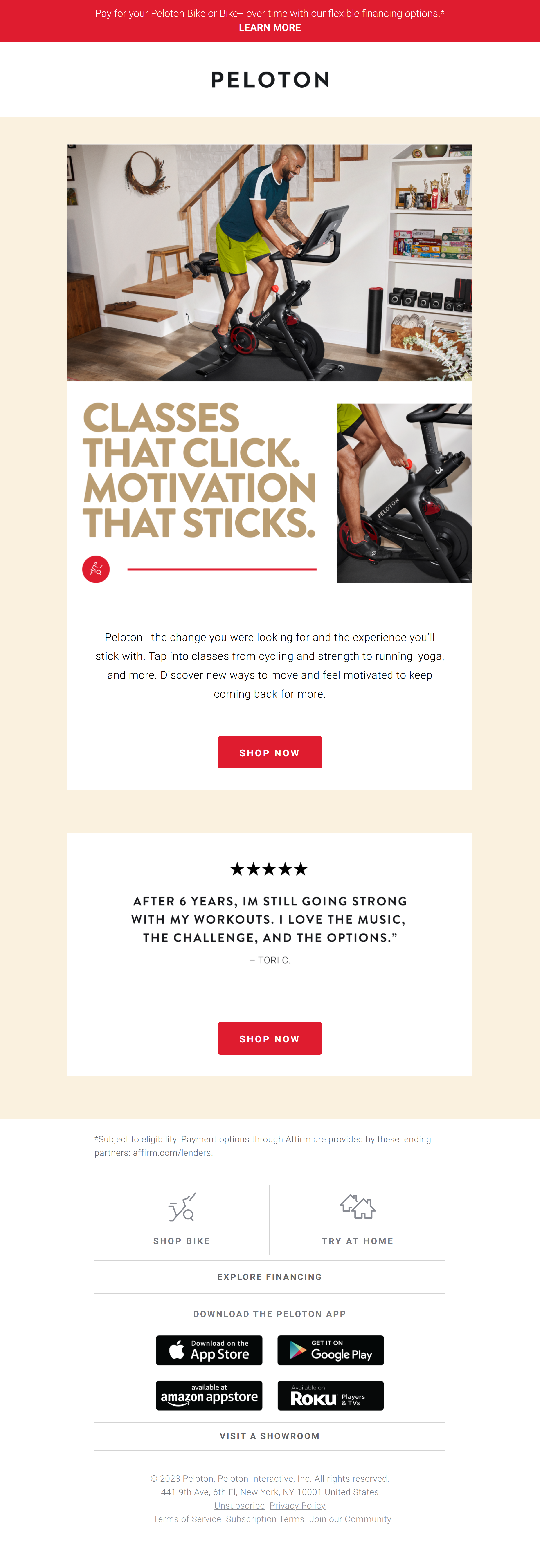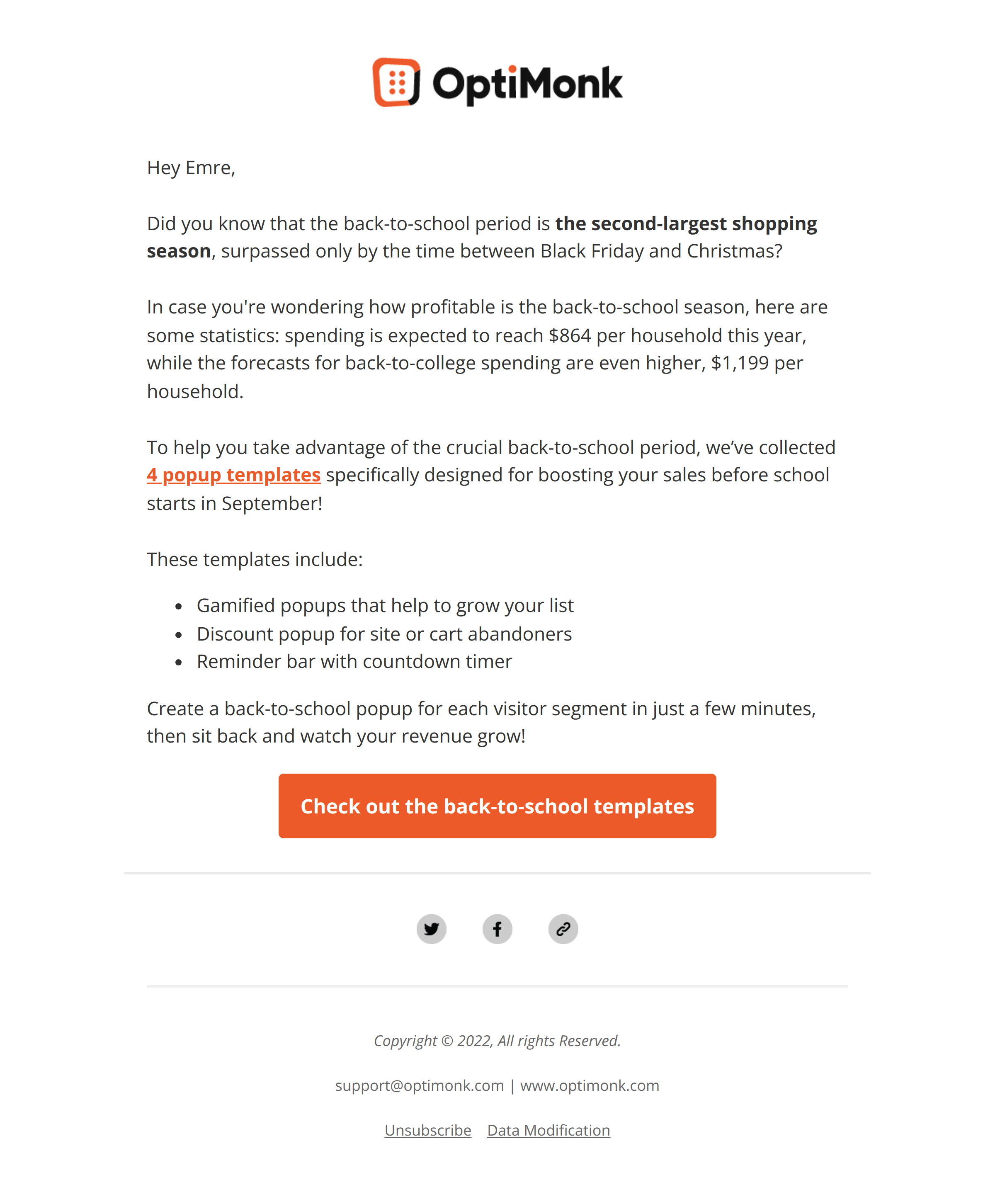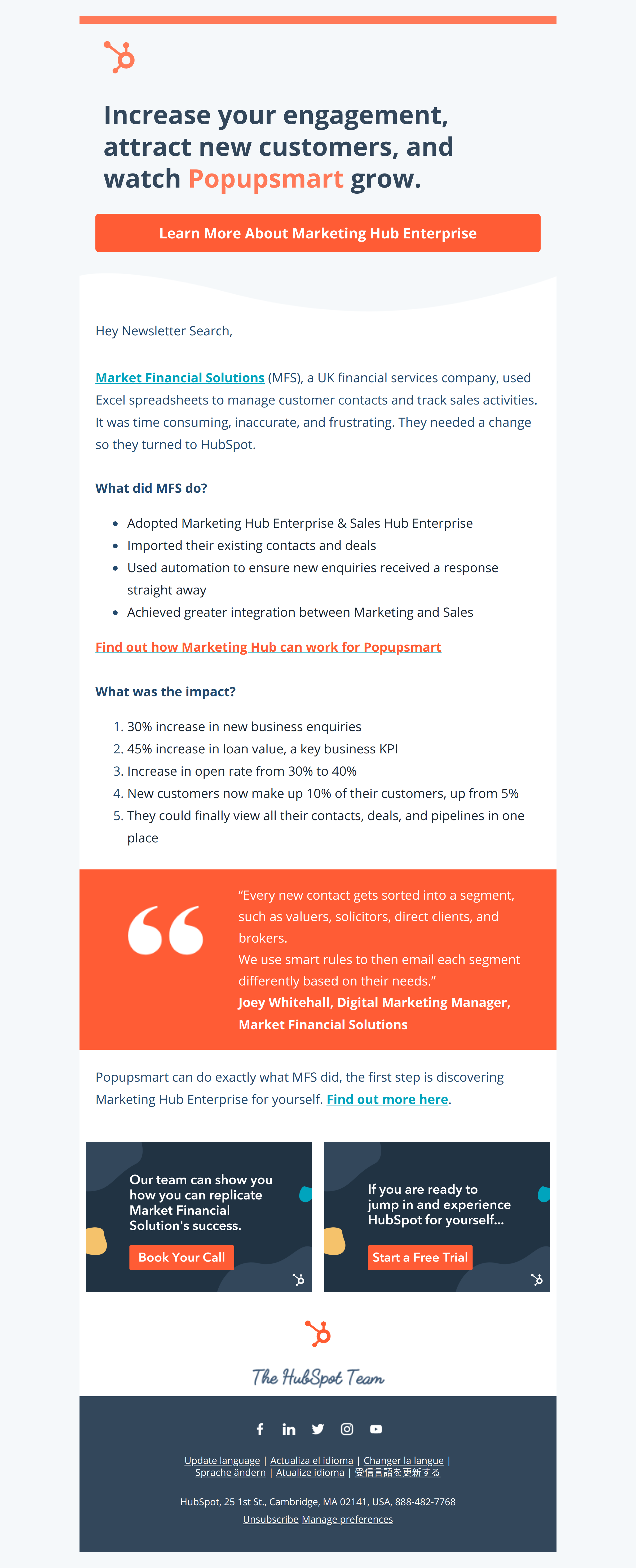
MailChimp: Issue 52 – Crafting Better Automated Emails - Newsletter Text Content
MailChimp ♥ Agencies
Issue 52
Crafting Better Automated Emails
Reading time: six minutes You don’t have to work at an agency for very long to figure out that experimentation makes clients nervous. And can you blame them? Who wants to pay money to fool around with untested strategies? You hire an agency for its expertise.
Of course, this puts agencies in something of a bind. How do you test new tactics or ideas without risking client cash—or the relationship? For digital marketing agency Vital, the answer is pretty simple.
“We’re the guinea pigs,” says Doug Ridley, director of consulting. “When we take an idea to the client, we know it works because we’ve executed it.”
That willingness to experiment on themselves has played a big role in Vital’s growth—and has also led to new ways of thinking about email, automation, and the craft of copywriting.
Throw away the cookie cutters
With hundreds of new subscribers joining Vital’s email list each month, it might seem strange that Ridley was unhappy with it. The problem, though, was what happened after people subscribed.
“When a new subscriber would join our list, they’d receive a standard welcome email,” Ridley says. “And ours was no different than everybody else’s. It said, ‘Welcome to our list, here’s what to expect, here’s some links to our blog, here are some resources.’ You’ve seen it a hundred times before.”
Even the subject line was predictable: Thanks and welcome to the newsletter.
“We started looking at our welcome email through a strategic lens and just thought, ‘Damn. We’ve got so many people signing up each month. What the heck are we doing? This is a huge missed opportunity,’” Ridley says.
Instead of sending a cookie-cutter message to new subscribers, Ridley and his team decided to see what they could do to turn that first email into a stronger engagement piece. After some initial testing and trial-and-error, they discovered that the best way to get a response was simply to ask the right question.
“With automation, one of the challenges is to make sure you’re still ready to engage with your subscribers,” Ridley says. “You can’t just set it and forget it. What we realized was that we could use that first automated email to ask our subscribers about their biggest pain points and explain how we could share useful content that speaks to their problems.”
It was this shift in thinking that led Vital to use automation to speak with people rather than at them. And the results speak for themselves.
“Our welcome email has an open rate of 41.4%,” Ridley says. “People respond by telling us what they need, and we have our team standing by ready to set it up. The strategy worked so well for us that we’ve started using it for all of our clients using MailChimp.”
“The goal became to try to get a response... It’s changed the way our writers work.”
Keeping it real
One of the keys to the success of the new welcome email, Ridley says, was good copywriting. But it required the writers to start thinking a little differently about the goals of automation.
“The goal became to try to get a response to every email,” Ridley says. “When someone reads it, they should feel like it was sent by a real person who took the time to sit down and write to them. It’s changed the way our writers work.”
With the new goal in mind, copywriters began to include that personal outreach in every email they wrote.
“There’s now always that invitation, a line that says, in effect ‘Hey, I’m a real person writing this, and if you have a question feel free to reply.’ That prompt always gets a big response. Just inviting people to reply draws them in,” Ridley says.
For clients, Vital assigns writers to specific accounts in order to create a continuity of voice that reinforces the notion of a ‘real person’ behind the email.
“Our writers are involved with clients from the very beginning, so they really understand what the client wants and what they’re trying to accomplish,” Ridley says. “The success of our automated campaigns comes from a partnership between the writer and the client.”
The clients are heavily involved in the writing process as well, providing insight not just into goals and benchmarks but also into company quirks and idiosyncrasies.
“We’ll go back to our clients with copy and ask, ‘How do we make this sound more like you?’ We want to know how they use language, how they talk to their customers, what makes them unique,” Ridley says. “Getting that information to the writer leads to better emails.”
Response requested
The success of this approach has transformed how Vital treats email as a marketing channel.
“As a digital marketing agency, our goal was always to drive traffic to the website to convert in a form,” Ridley says. “But all of a sudden, we realized we don’t have to do that. If we want the conversion, we just have the reader hit reply.”
It’s 1 fewer step for customers to take, with no loss of service. They can still request a quote or more information or just touch base—and now the whole process is a lot more personal.
“It worked so well that our whole email campaign strategy shifted,” Ridley says. “Instead of sending emails every time there was a blog post or focusing so much on the website, we started sending automated content a couple times a week. And because our writers have done such a good job of crafting those emails, our subscribers want to engage with them.”
Vital HQ in Portsmouth, New Hampshire.
5 quick tips on writing engaging emails
Whether you’ve got a team of copywriters at your disposal or not, there are a few things everyone can do to write more effective emails. Here are 5 quick tips you can start using today.
- Match the style to the client. “Our writers follow a style guide that fits the client they’re writing for,” Ridley says. “It helps maintain brand consistency and leads to better engagement.” An inappropriate style can lead subscribers to wonder if they’ve made a mistake.
- Look at what everyone else is doing—then do the opposite. “When your subject line is the same as what everyone else is using, you get lost in people’s inboxes,” Ridley says. If you’re saying something unique, you’re more likely to get noticed.
- Be smart about rewrites. “MailChimp is great for testing,” Ridley says. “And that data absolutely informs our rewrites.” If a campaign doesn’t seem to be working, test, rewrite, then test again.
- Be direct in your writing. Ask for what you want. “It was important to let people know we wanted to hear from them,” Ridley says. “People aren’t used to replying to a welcome email.” If you can be clear about what you want from your reader, you’ll be more likely to get it.
- Write with a goal in mind. “Our writers knew that the goal was to get a response,” Ridley says. “That informed everything they wrote.” If you’re having trouble figuring out what to write, a well-defined goal can help to clarify things.
Illustrations by Joshua Mulvey, a professional designer and illustrator in the Greater Boston Area.
Have any questions about the topics we've discussed this week? Just reply to this email and we'll be in touch.
Next week, our series with Vital comes to a close with a case study on customer retention through automation. See you Tuesday morning!













